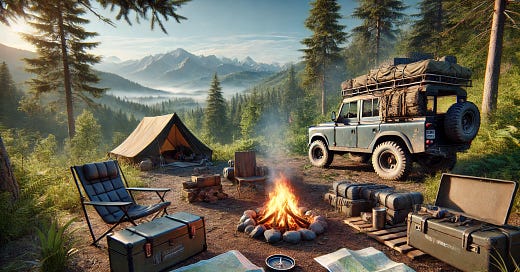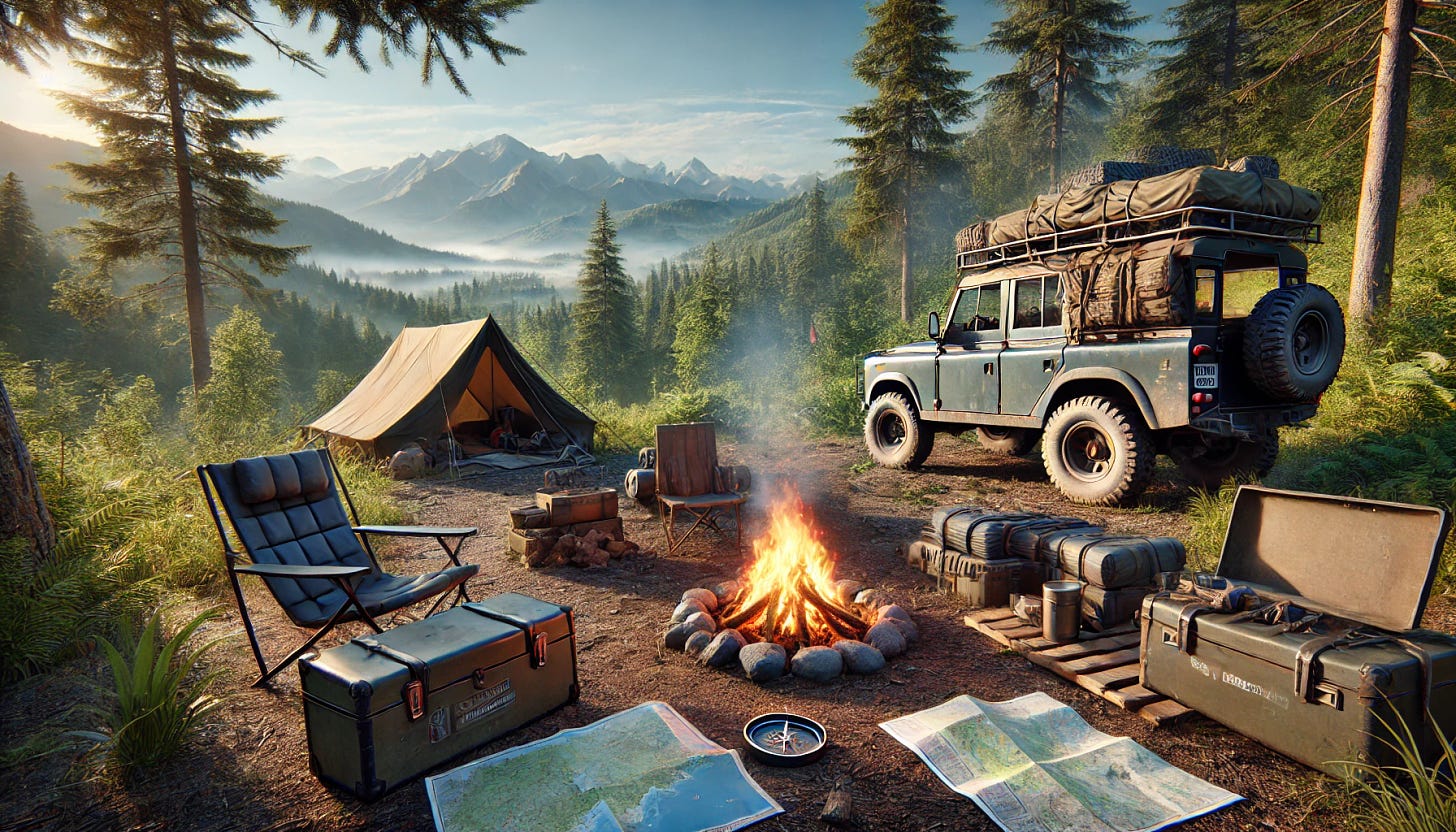Overlanding offers an incredible way to explore the beauty of the outdoors while embracing the spirit of adventure. Whether you’re a seasoned overlander or planning your first journey, careful preparation is key to a successful trip. Here’s a step-by-step guide to help you plan the perfect overlanding adventure.
1. Choose Your Destination
The first step in planning your overlanding trip is deciding where you want to go. Consider what kind of terrain you want to explore—do you prefer rugged mountains, dense forests, or open desert landscapes? Research potential destinations to understand trail difficulty, seasonal accessibility, and the types of permits required. Some great destinations in Northern California include the Lost Coast, Mendocino National Forest, and the Rubicon Trail.
2. Plan Your Route
Once you’ve chosen a destination, map out your route. Use tools like Gaia GPS, Google Maps, or OnX Offroad to plan your path. Consider trail difficulty, fuel availability, and points of interest along the way. Make sure to plan a backup route in case the main one is impassable. Having both electronic and paper maps will give you a reliable way to navigate.
3. Prepare Your Vehicle
Your vehicle is your lifeline when overlanding, so ensuring it’s in good condition is crucial. Here’s what you need to do:
Maintenance Check: Before heading out, have your vehicle thoroughly inspected. Check tire condition, brakes, fluids, and engine performance.
Essential Modifications: Depending on your destination, consider modifications like off-road tires, lift kits, and skid plates to protect your vehicle.
Emergency Kit: Carry a basic tool kit, jumper cables, spare tire, tire repair kit, and a portable air compressor. Being prepared for mechanical issues can make the difference between a minor hiccup and a major problem.
4. Gear Up
The right gear can make all the difference in your overlanding experience. Here’s what you need:
Camping Gear: Depending on your preference, bring a roof-top tent or ground tent, sleeping bags, and a sleeping pad for comfort.
Cooking Equipment: A portable stove, fuel, and basic cooking utensils are essential. Don’t forget a cooler or portable fridge to keep food fresh.
Navigation Tools: Have a reliable GPS device, a compass, and paper maps as backups. A two-way radio or satellite phone can also be lifesavers in remote areas without cell service.
5. Pack the Essentials
Water and Food: Bring enough water for drinking, cooking, and cleaning. The rule of thumb is at least one gallon per person per day. Pack lightweight, easy-to-cook foods like dehydrated meals, canned goods, and snacks.
First Aid and Safety: A first aid kit is a must, including bandages, antiseptic wipes, pain relievers, and any personal medications. Don’t forget a fire extinguisher for emergencies.
Clothing: Pack for all weather conditions. Layered clothing works best, as it allows you to adjust to changing temperatures throughout the day.
6. Check Weather and Trail Conditions
Before you leave, check the weather forecast and trail conditions. Unexpected weather changes can make trails more difficult or even dangerous. Websites like the National Weather Service or local land management agencies provide updates on weather and trail statuses. Avoid trails that are too muddy to minimize environmental impact and prevent getting stuck.
7. Permits and Regulations
Many overlanding destinations require permits for camping, off-roading, or even just accessing certain areas. Research and obtain any necessary permits before you go. Respect all local regulations, including fire restrictions and camping rules, to ensure that you’re following responsible overlanding practices.
8. Travel with a Buddy
Whenever possible, travel with at least one other vehicle. Overlanding in remote areas comes with risks, and having a second vehicle provides a safety net if something goes wrong. You’ll also have extra manpower if you need help with recovery or repairs.
9. Leave No Trace
One of the most important principles of overlanding is to leave no trace. Pack out all trash, minimize campfire impacts, and avoid damaging the environment. Staying on designated trails helps protect the natural landscape and keeps areas open for future adventurers.
10. Enjoy the Journey
Finally, remember that overlanding is about the journey, not just the destination. Take time to enjoy the scenery, explore new places, and make memories. Whether it’s watching a beautiful sunset from your camp or tackling a challenging section of trail, embrace the experience and have fun.
Final Thoughts
Planning an overlanding trip may seem daunting, but with careful preparation, it can be an incredibly rewarding adventure. By choosing the right destination, preparing your vehicle, packing the essentials, and practicing responsible trail etiquette, you’ll be ready to hit the trails with confidence. So gear up, plan your route, and get ready for an adventure that you’ll never forget!















Share this post